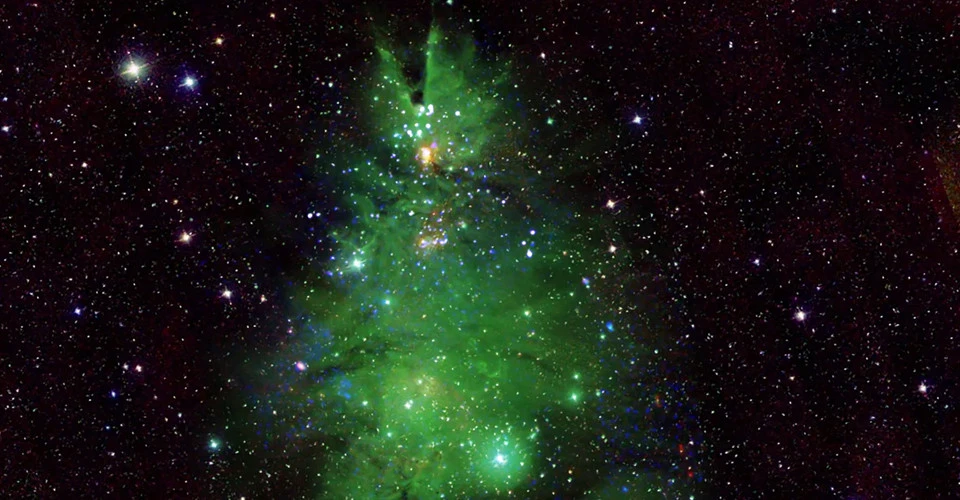
The new image of NGC 2264, also known as the “Christmas Tree,” is a cluster of young stars between one and five million years old in the Milky Way at a distance of about 2,500 light-years from Earth.
This was reported by the NASA press service.
The stars in NGC 2264 are both smaller and larger than the Sun, ranging from those with less than a tenth of the Sun’s mass to those with about seven solar masses.
This new image reinforces the resemblance to a Christmas tree through a combination of colors and rotation. The blue and white lights are young stars that emit X-ray light. The gas in the nebula glows in green, which corresponds to the “needles” on the tree, and the stars in the foreground and background glow in white.
Young stars such as NGC 2264 are variable and often flare in X-rays, and also undergo other types of changes that can be seen in different types of light. The coordinated blinking changes shown in this animation, however, are artificial to emphasize the arrangement of the stars in the X-rays and to emphasize the similarity of this object to a Christmas tree. In fact, the changes in the stars are not synchronized.
The variations observed are caused by several different processes. Some of them are related to the activity of magnetic fields, including flares similar to those experienced by the Sun but much more powerful, as well as hot spots and dark areas on the surface of stars that appear and disappear from view as the stars rotate. There may also be changes in the thickness of the gas obscuring the stars and changes in the amount of material still falling on the stars from the disks of surrounding gas.
On Thursday, December 14, a NASA spacecraft detected a huge pulse of energy radiation. The sun has released the most powerful flare since September 2017.

